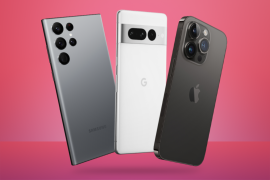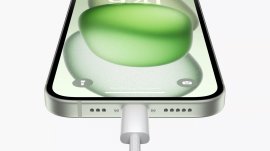Samsung Galaxy S23 review: a familiar formula, improved
The most mainstream Galaxy stays small while stepping up performance
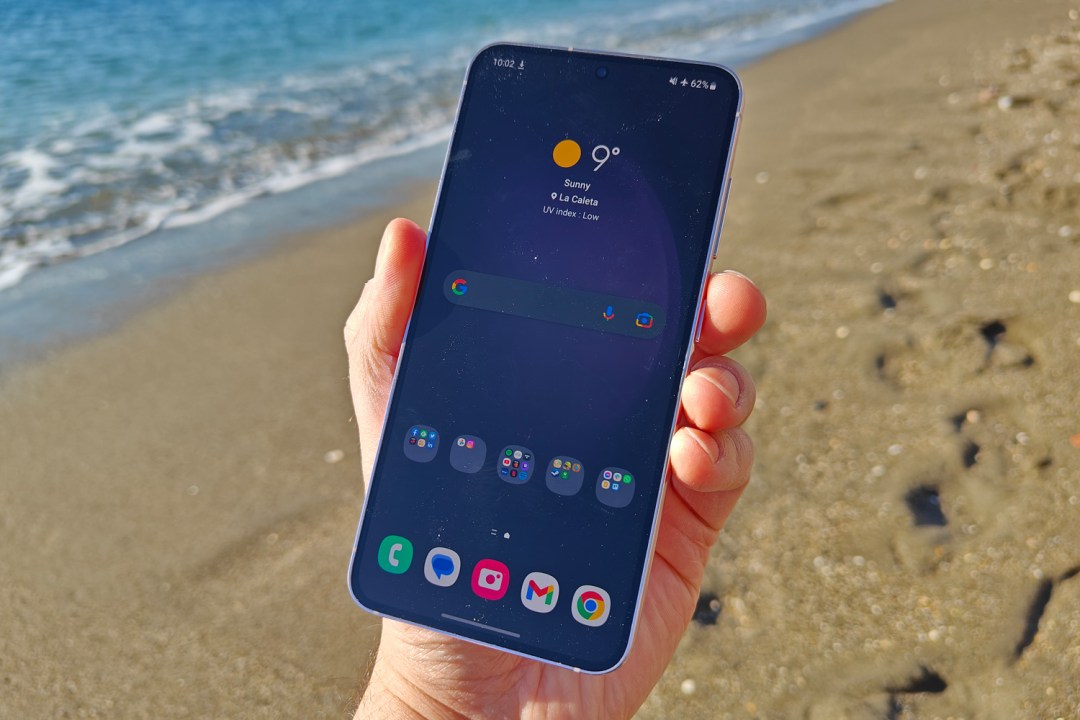
There’s a strong sense of Deja Vu about Samsung’s latest mainstream hero phone. The Galaxy S23’s styling changes are certainly on the subtle side, and there’s been no growth spurt from the previous generation. There are no whiz-bang new cameras like the much spendier S23 Ultra either, sticking with the same sensor trio as the outgoing Galaxy S22.
Bigger changes have been made under the skin, of course – there’s a larger battery and Qualcomm’s latest, greatest mobile CPU running the show. But are these changes enough to justify a sizeable price bump over the outgoing model?
Review originally published 3 March 2023
Design & build: keepin’ it compact
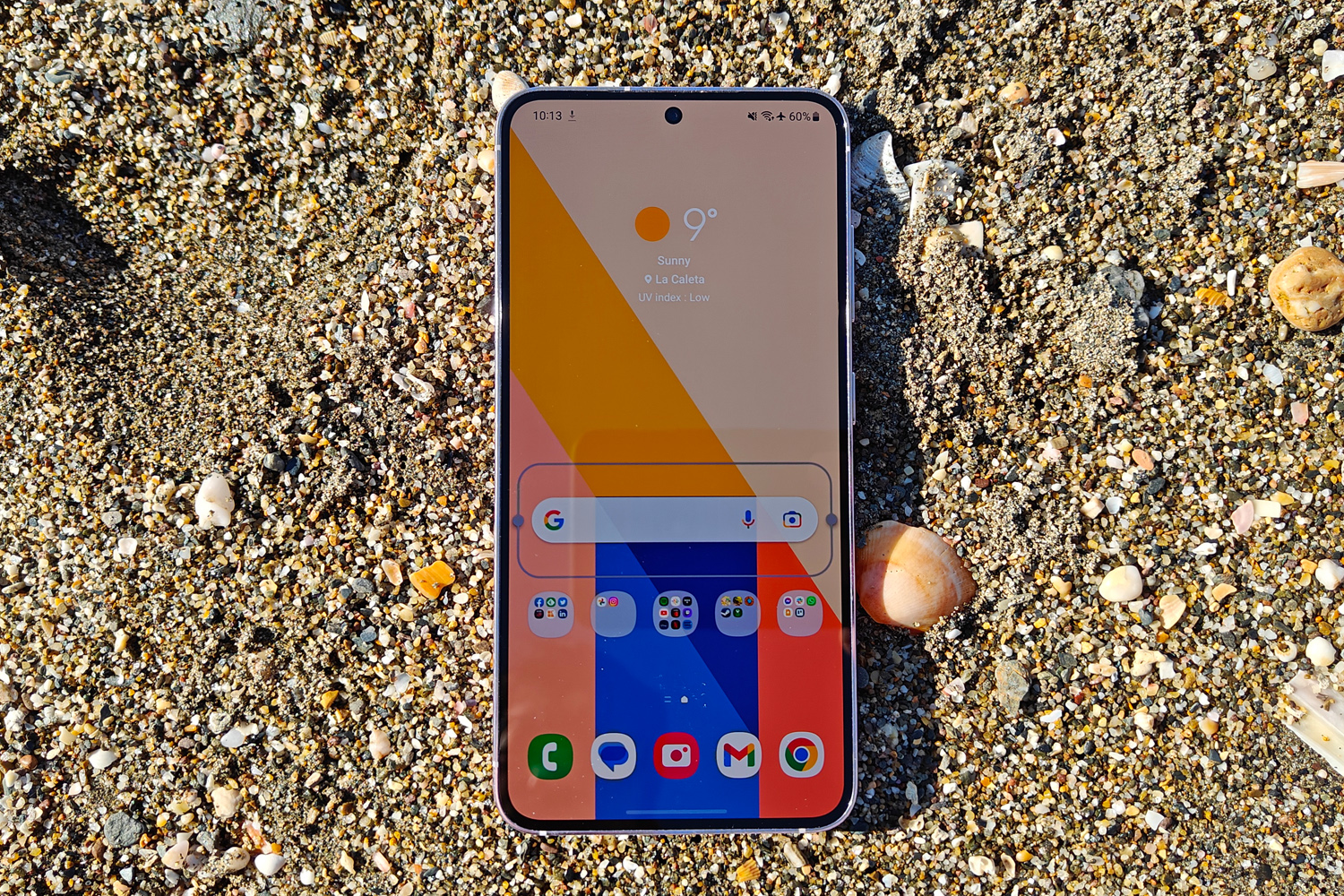
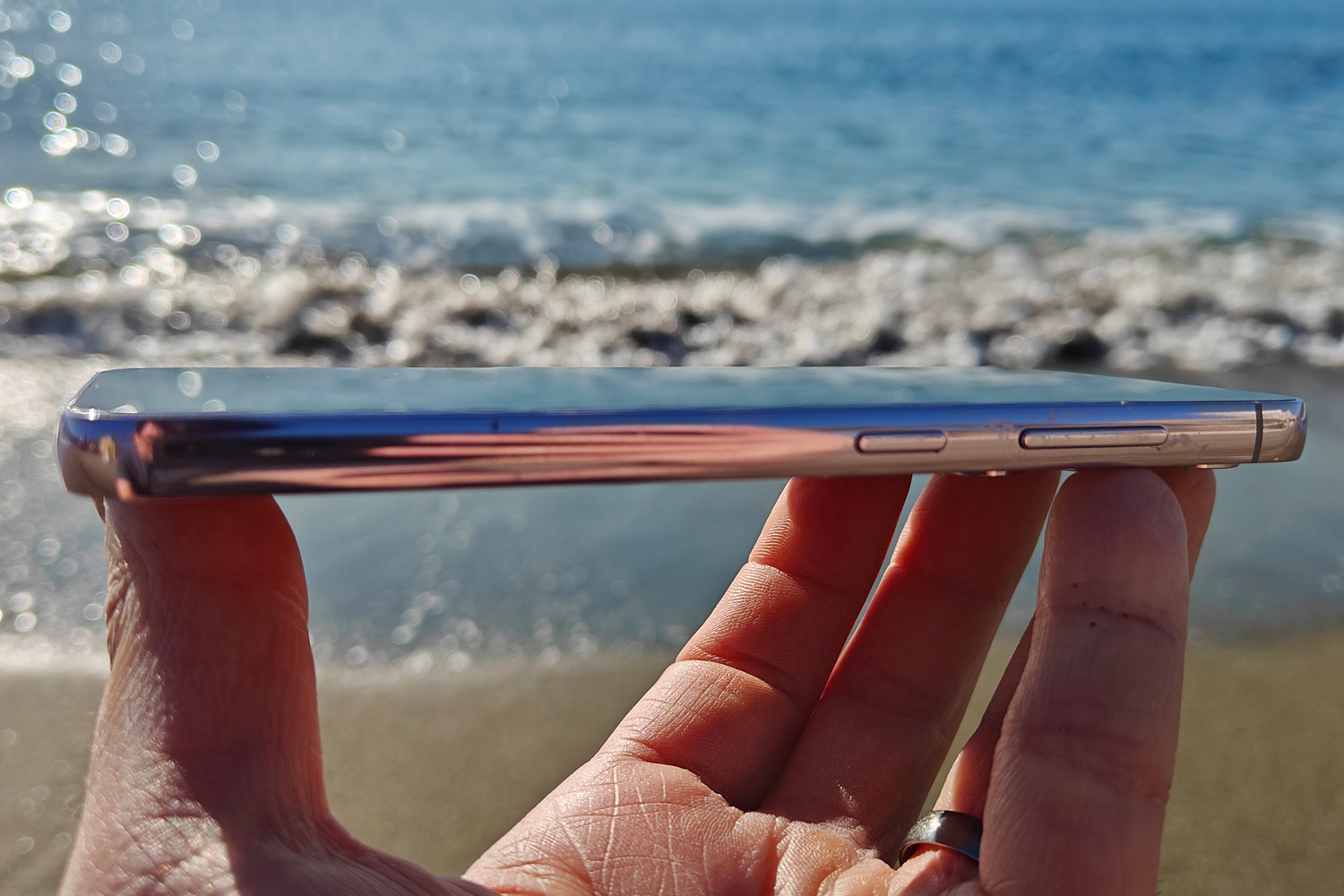
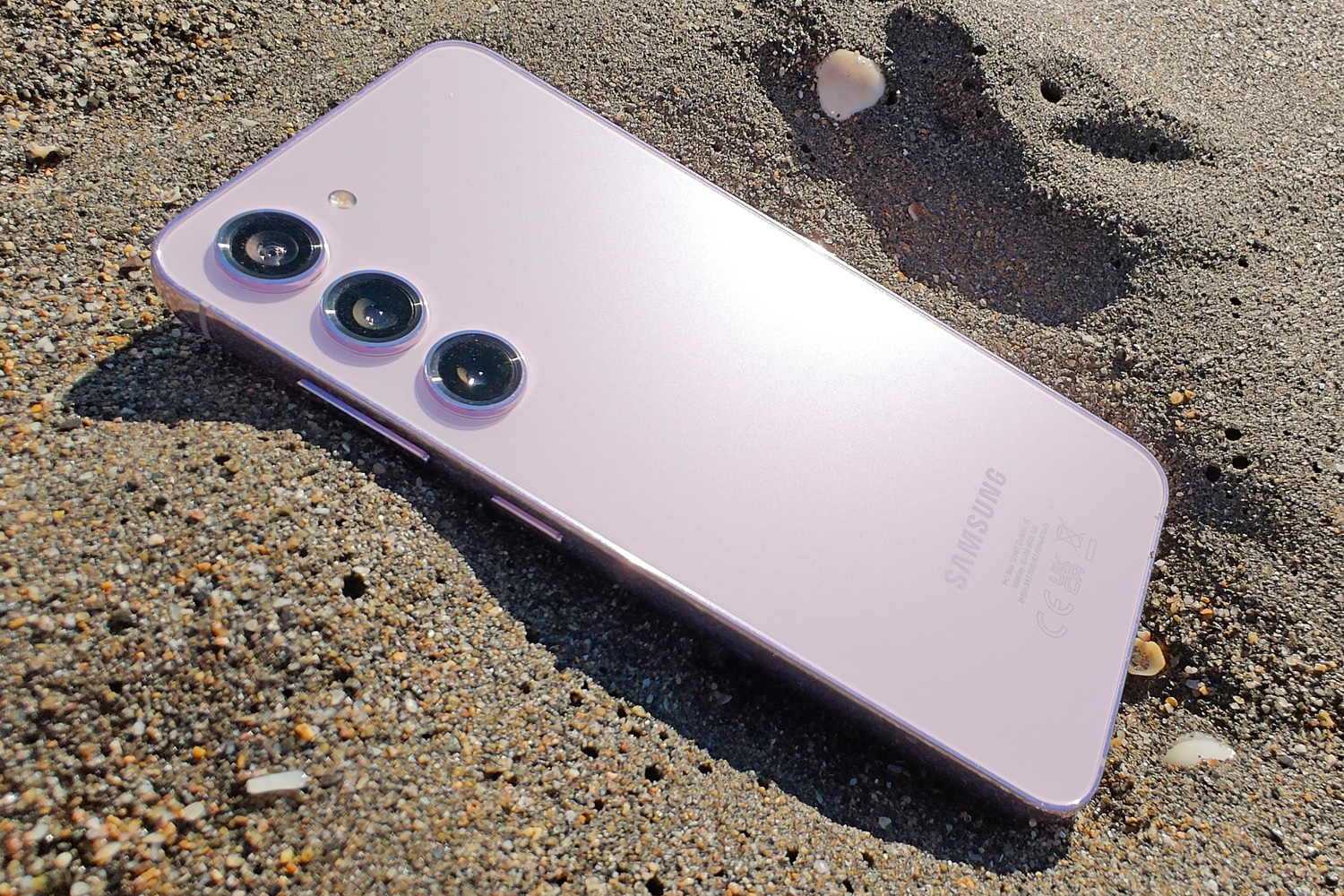
With near identical dimensions to last year’s model, the S23 feels instantly familiar once you pick it up. The slightly rounded metal frame still sits comfortably in your palm, the matte rear glass still effortlessly shrugs off fingerprints, and pastel hues are still apparently en vogue – although now there are four new ones to choose from. We’re partial to Cream and Green, but Phantom Black and Lavender are just as easy on the eye. Graphite and Lime options are exclusive to the Samsung web store.
Gorilla Glass Victus 2 glass also makes its first appearance in a phone here, and is apparently able to survive a 1m drop onto concrete. Not that we felt confident to see an S23 take a tumble during our loan.
The biggest change is at the rear, where the previous generation’s ‘contour cut’ camera bump has been deleted in favour of three bare camera lenses. All three S23 models now look like peas in a pod, instead of the Ultra model doing its own thing. It’s a subtle change, but one we reckon suits the phone’s already minimal styling. We didn’t need long with the S23 to tell those lenses are still going to be dust magnets, though. A dab with a wet cloth shouldn’t cause problems, at least, given the whole thing is IP68 dust and water resistant.
It’s otherwise a very similar story from the previous gen, with dimensions that best suit small hands. Anyone wanting more screen real estate will need to step up to the Galaxy S23 Plus, which apart from its bigger screen and battery shares most hardware with the standard model.
Screen & sound: Still tip top
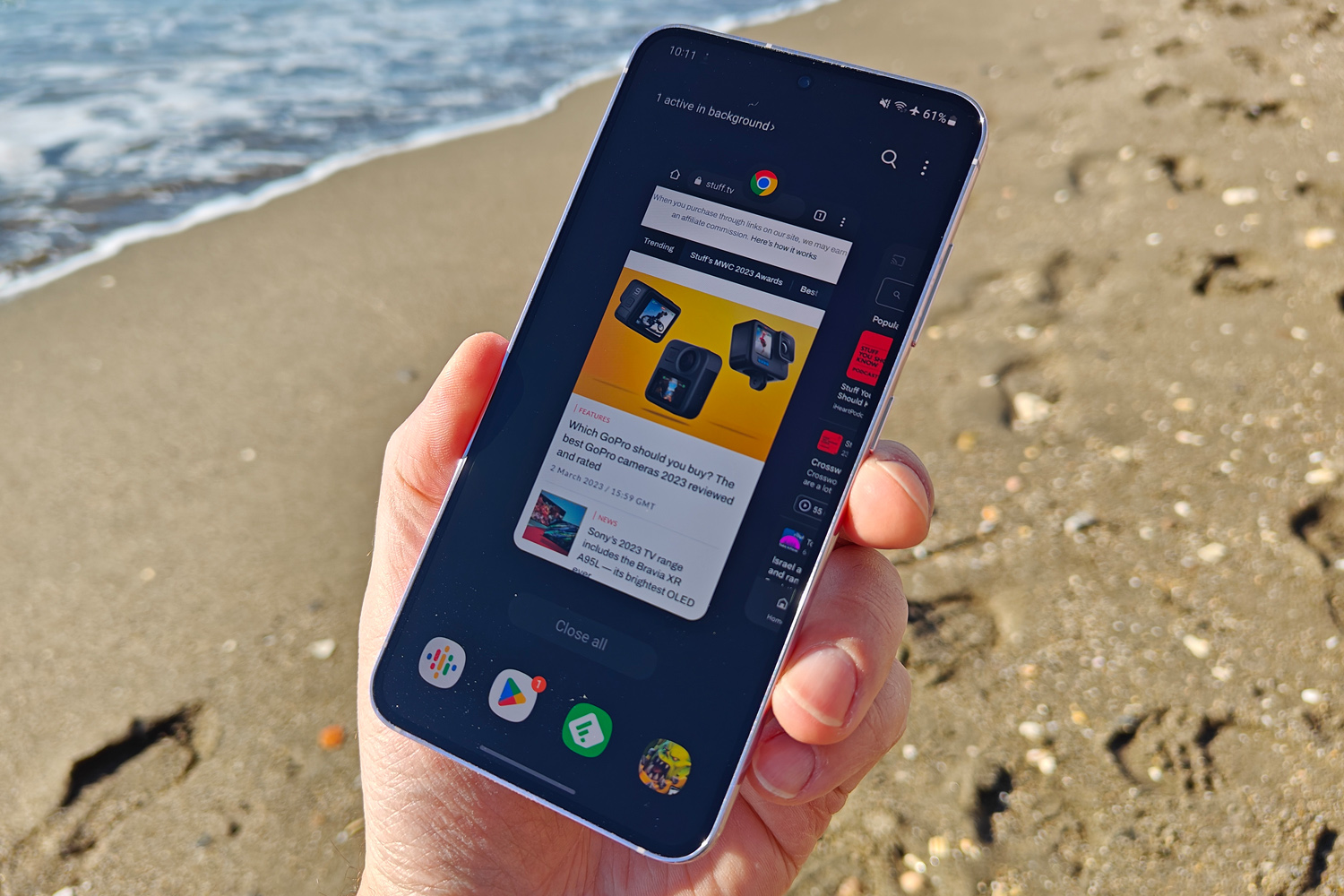
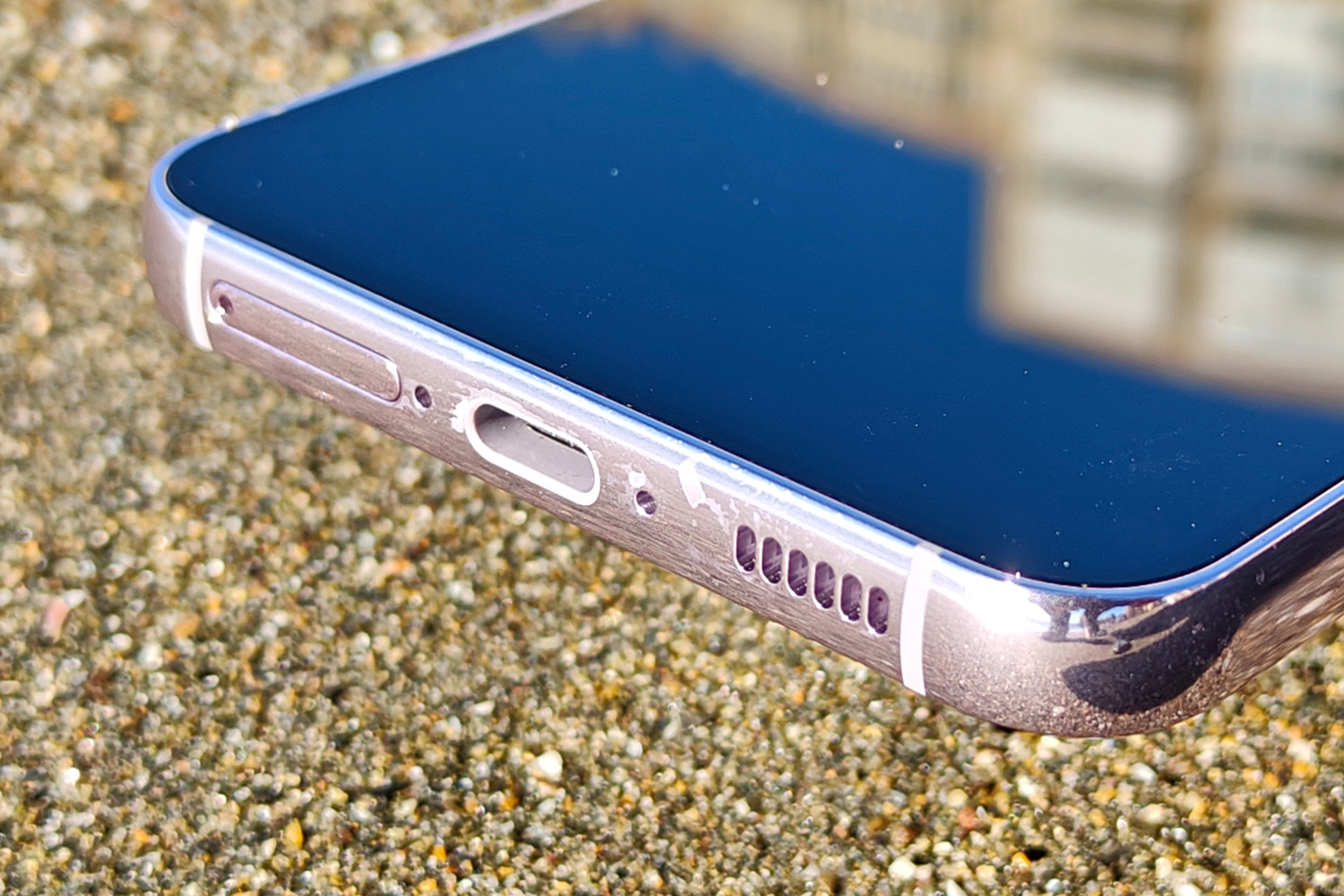
Newer, tougher glass aside, it doesn’t look like much has changed on the display front. The S23 has the same 2340×1080 resolution as last year, with a 120Hz adaptive refresh rate and HDR10+ playback. The AMOLED panel has seen a significant brightness boost though, reaching a peak 1750 nits. That’s a big step up from the S22, which peaked at 1300nits.
Visibility in bright sunshine isn’t a problem as a result, and HDR content looks sublime, with impeccable contrast and real variance between shadows and highlights. Images have a largely natural tone out of the box, with images saved to the photo gallery looking very close to reality, although you can whack up the vibrancy through the settings menus if that’s what you’re in to.
The flat screen also has superb viewing angles and really cram in the detail, although anyone chasing even more pixels per inch will want to step up to the S23 Ultra.
The 3.5mm headphone port has long been dead in Samsung’s eyes, but the S23 does at least support the firm’s own hi-res Bluetooth codec. Those that take their listening seriously will want a pair of Galaxy Buds Pro 2 wireless earbuds, while everyone else can make do with the built-in stereo speakers: they’re clear and full-bodied for their size, so I could happily listen along to YouTube videos and podcasts.
Performance & software: As good as it gets

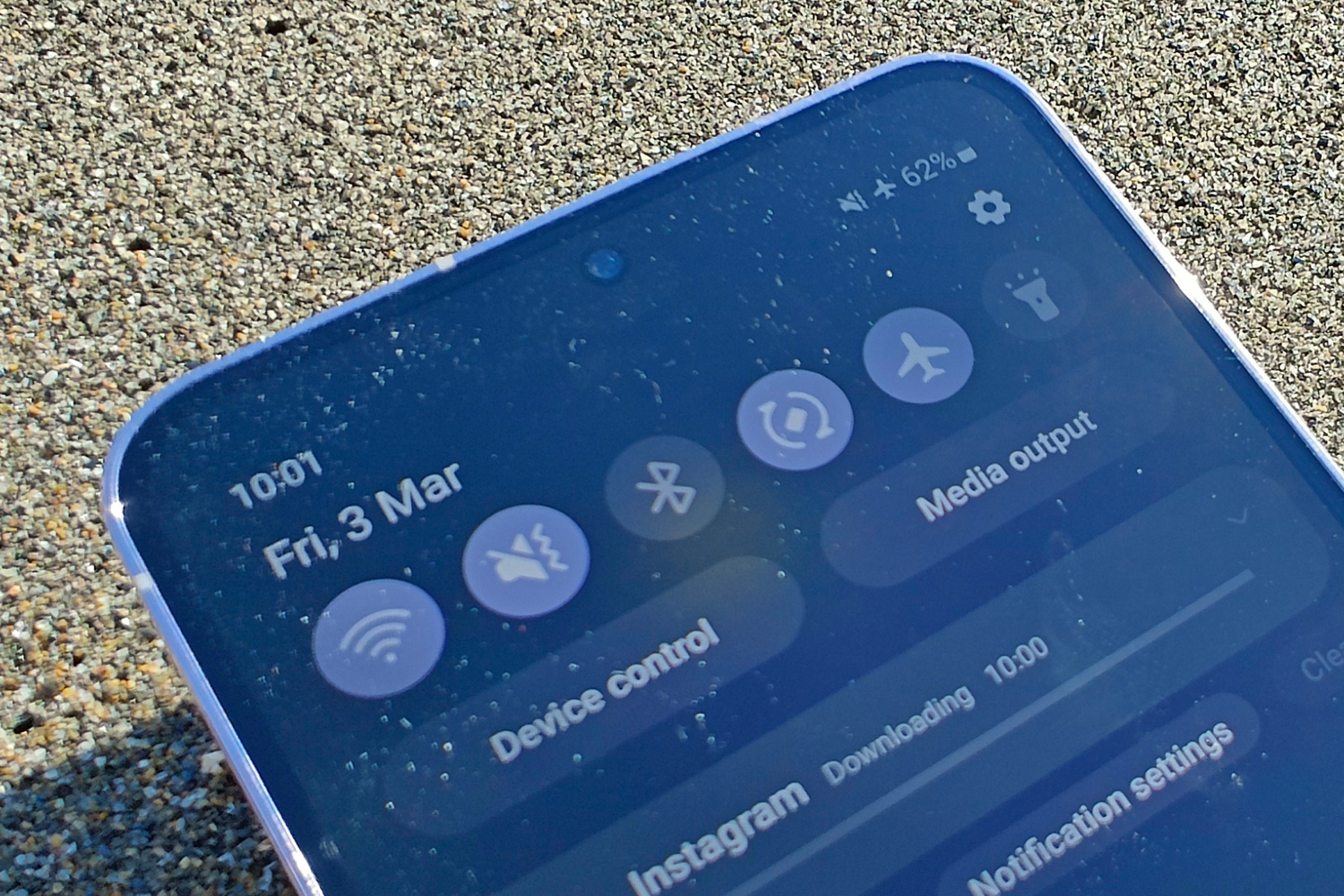
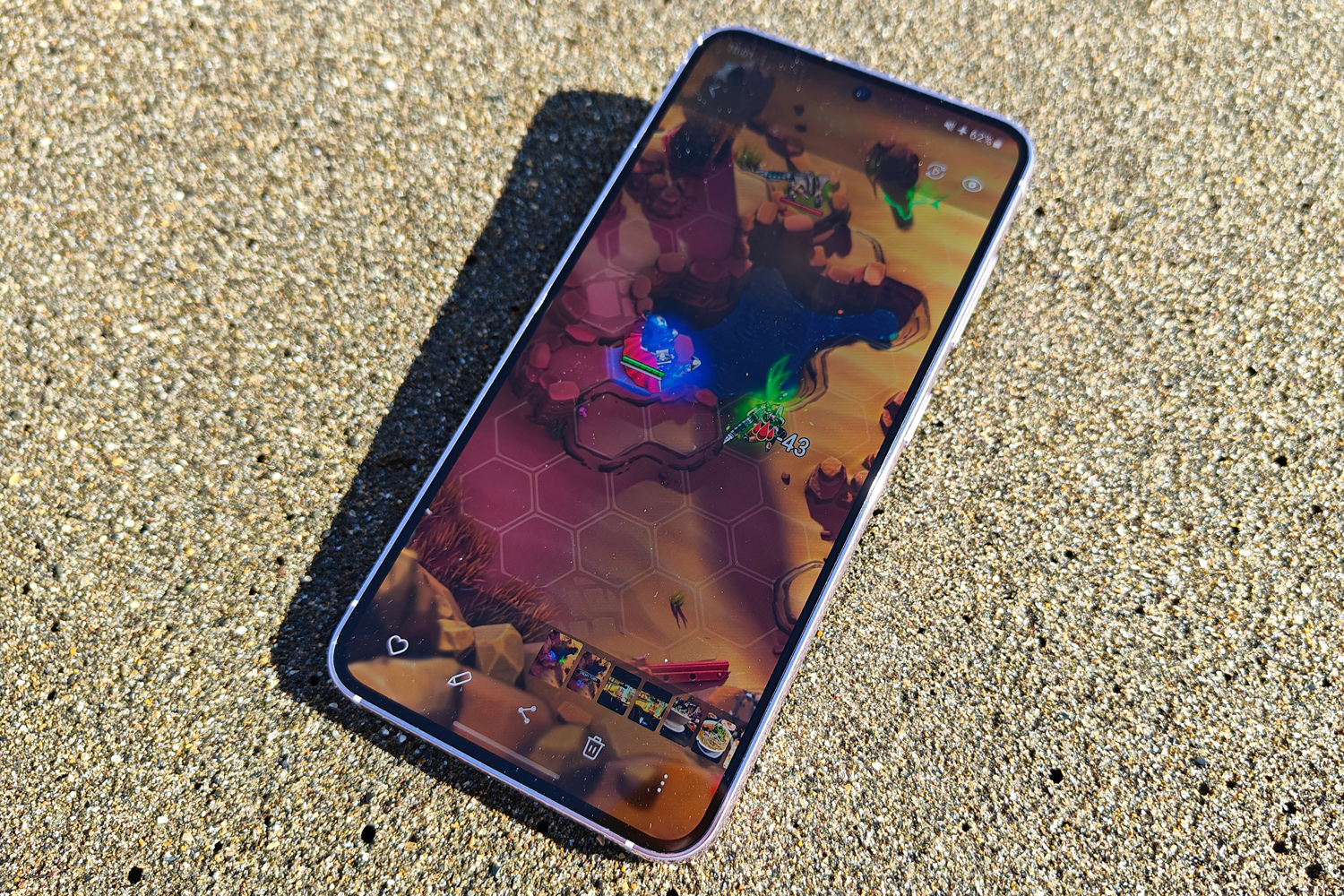
No matter where you are in the world, the Galaxy S23 will come equipped with a Snapdragon 8 Gen 2 CPU – that means no Exynos-powered handsets for Europe, as was the case in previous years. Samsung has tasked chipmaker Qualcomm with a few under-the-hood tweaks including a faster clock speed, which helped it outpace rivals using off-the-shelf silicon in pretty much every app we tried.
The S23 responds to taps and swipes instantly, opens apps in a flash and shows no signs of slowdown even when swapping between several open apps. There’s 8GB of RAM, which isn’t huge for a flagship phone these days, but multitasking was never an issue. Gamers can expect rock solid frame rates, too, thanks in part to the sensible screen resolution.
Naturally the S23 arrives running Android 13 out of the box, with Samsung’s OneUI 5.1 running on top. As the name suggests, this is a minor upgrade over the version launched last year, with just a few new additions. Modes and Routines is the standout, letting you automate certain settings or features based on the time of day, or your current location. You can now also respond to incoming calls with a text using the Bixby voice assistant, and co-edit Samsung Notes while on Google Meet calls.
Otherwise the interface is unchanged, with a whole host of Samsung apps pre-installed and plenty of navigation and app launching features available through the settings screen. Owners of previous Galaxy phones will feel right at home, and despite the visual differences, most settings and shortcuts are on par with vanilla Android. You can expect four generations of Android updates, as well as five years of security patches, so it could be a perfect investment for anyone after a long-haul handset.
Battery life: bigger means better
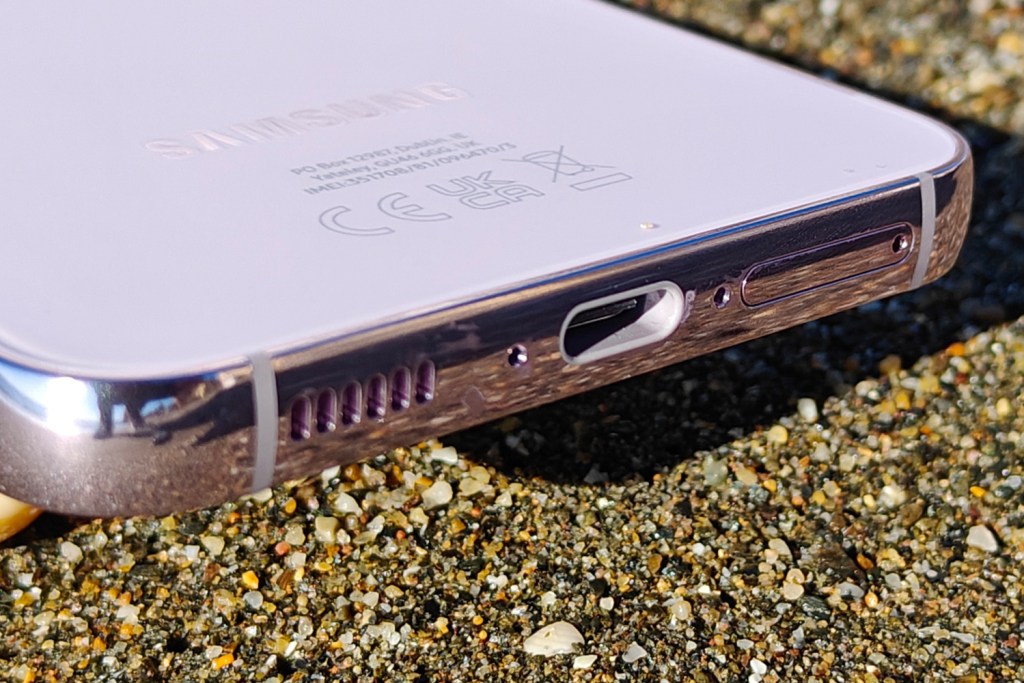
The Galaxy S22 came in for a bit of stick over its limited battery life, so Samsung has squeezed in a larger cell this time around. 3900mAh is still on the small side, but any increase is a welcome one. Add in the more efficient CPU, plus a little Samsung optimisation magic, and the S23 is an amazing performer away from the mains.
It breezed through from breakfast to bedtime without having to dip into the power saving settings, even with a healthy mix of camera use, gaming, video playback and apps that make more modest use of all the power on tap. This is now very much an all-day phone, with enough in the tank to last until the next morning without needing an overnight charge.
That said, with charging speeds that still lag behind rivals, we imagine most owners are still going to leave it sipping down power while they slumber. The S23 is limited to pedestrian 25W wired top-ups, while the pricier S23 Plus gets 45W – and both are less than half of what the OnePlus 11 can manage. We appreciate the returning inclusion of convenient wireless charging, though.
Cameras: tasty trio
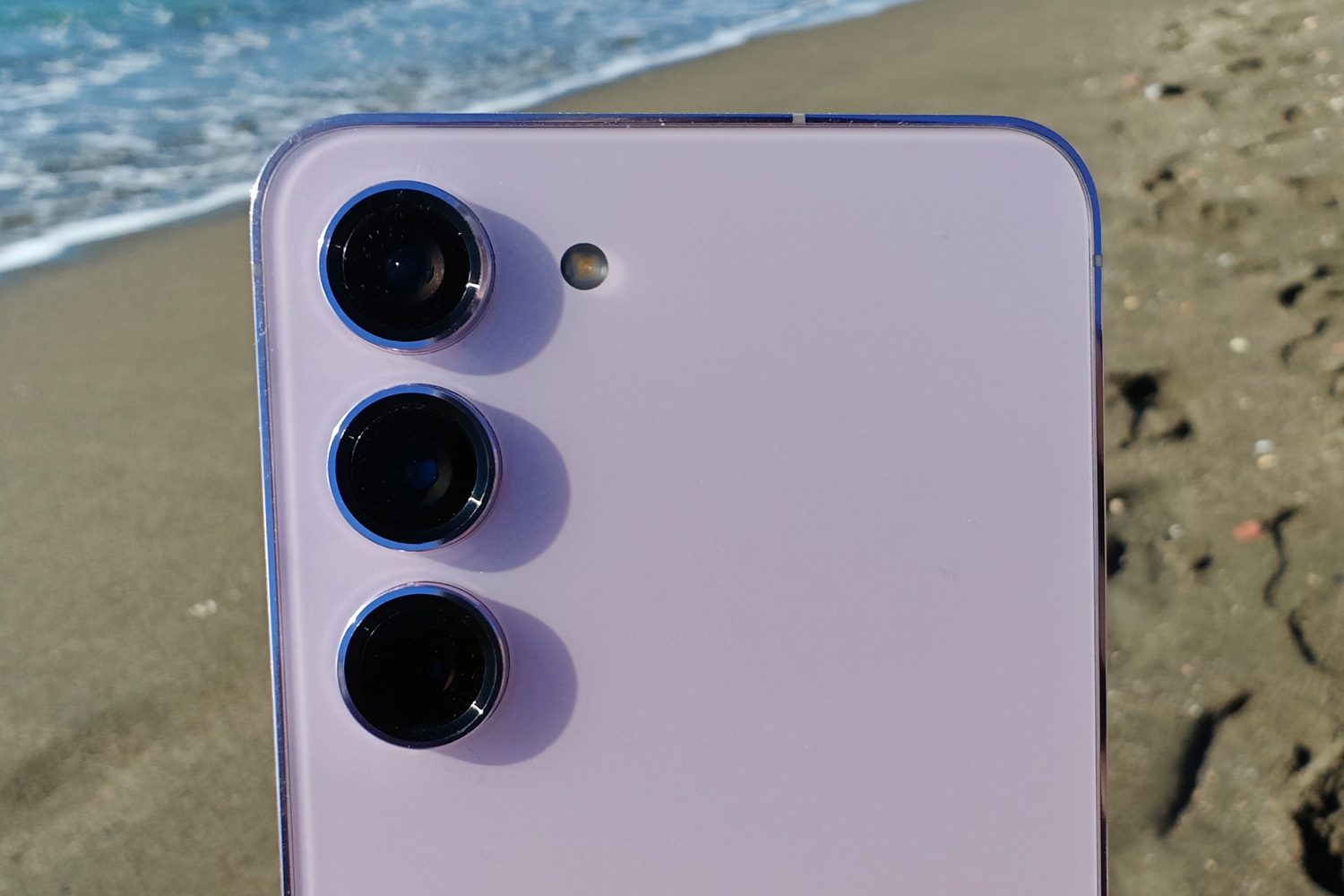
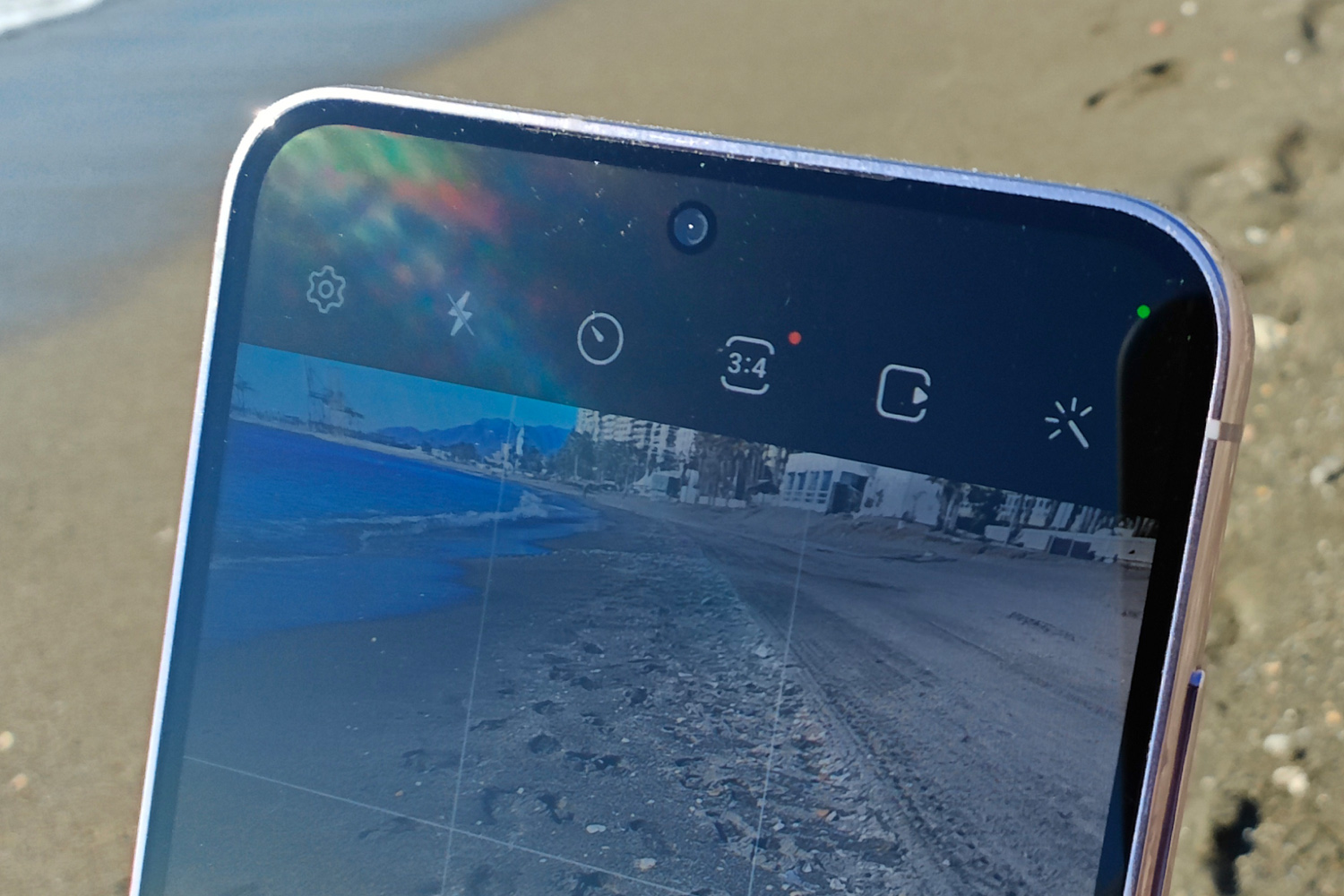
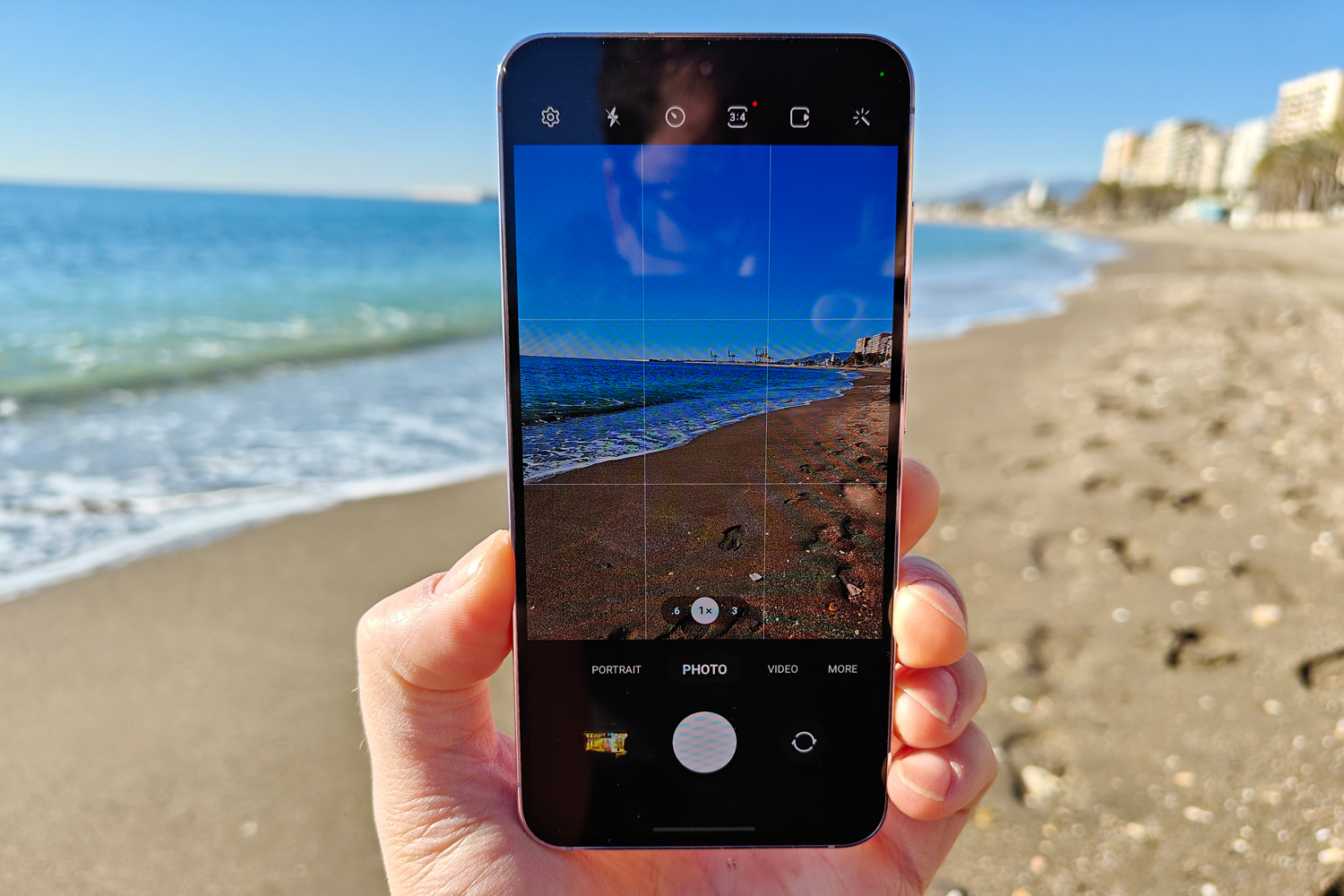
This year’s photography hardware changes are limited to the front-facing selfie camera, which steps up to a 12MP sensor. Photos looked clean and detailed, with rich colours and well-balanced contrast – as you’d expect from a top-tier handset.
On the rear, the S23 sticks with the same 50MP main snapper, 12MP ultrawide and 10MP telephoto (good for 3x optical zoom) as the previous generation. But then seeing how the S22 series could take some stellar shots already, that’s not necessarily a bad thing.
Another year of Samsung image processing smarts has reduced image noise, improved image stabilisation for video recording, and given low-light shots a boost with Night Portrait, which analyses hair, eyes and skin separately for more effective bokeh blur once the sun has gone down. We also like that the Expert Raw mode finally takes full-resolution 50MP shots, rather than downsampled 12MP ones like last year.
Differences are minor, but noise is now absent in all but the darkest of night shots, HDR balances highlights and shadows brilliantly, and colours are as punchy and vivid as Galaxy fans have come to appreciate. It was also quick to focus and largely on point with exposure.








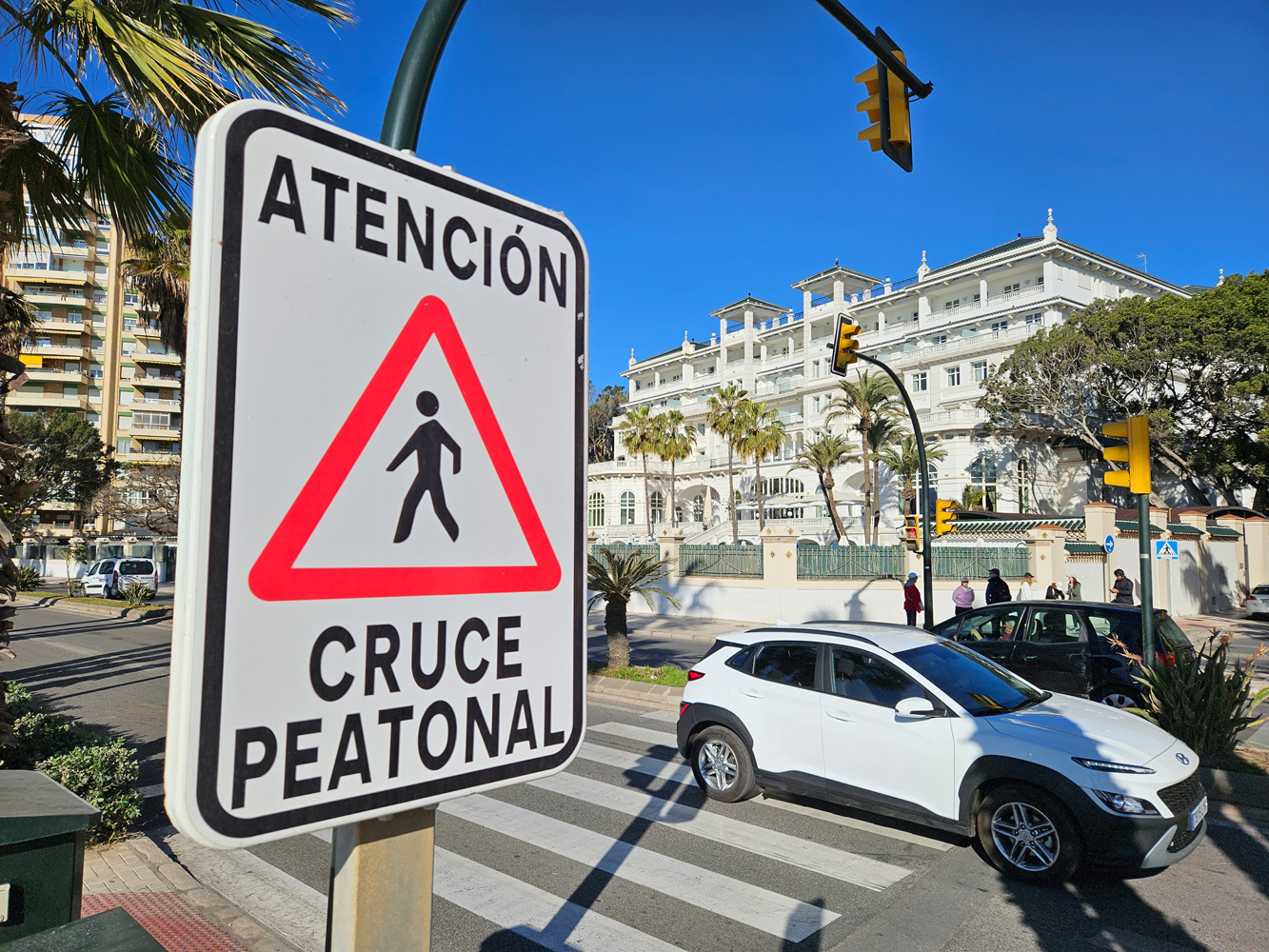



The 3x zoom remains a step up from rivals with 2x lenses, letting you get closer to your subject with no loss of clarity, and the ultrawide crams in a lot more of a scene without dramatic lens distortion at the edges of the frame. Bokeh effects on portrait shots were largely convincing, although certain hairstyles and fine details gave the game away that it was a digital effect, rather than something done in-camera.

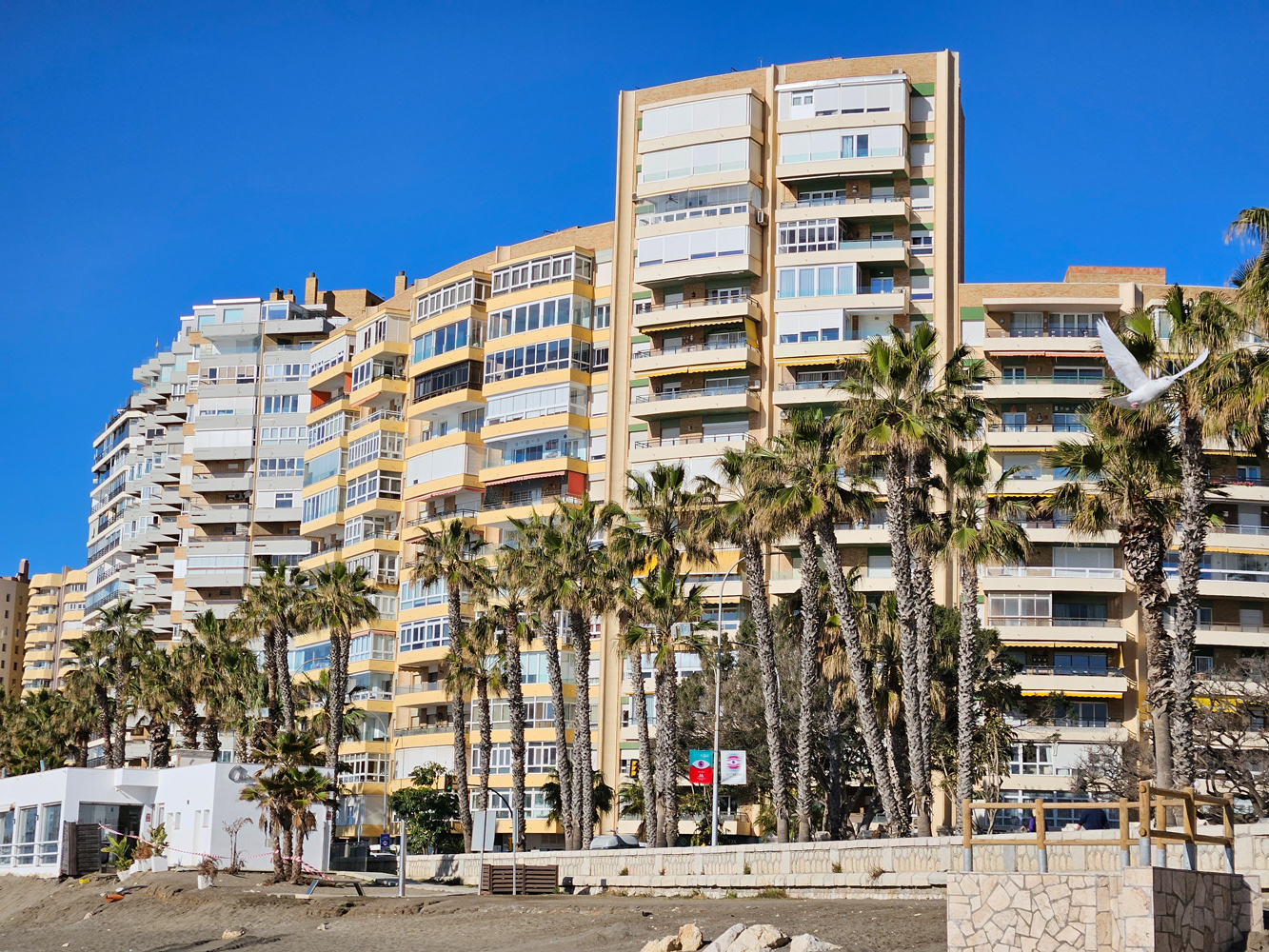


Ultimately Samsung didn’t need to do a lot to maintain its place towards the top end of the Android camera world, and from what we’ve seen, the S23 is still exceptionally capable.
Samsung Galaxy S23 verdict: still a safe bet
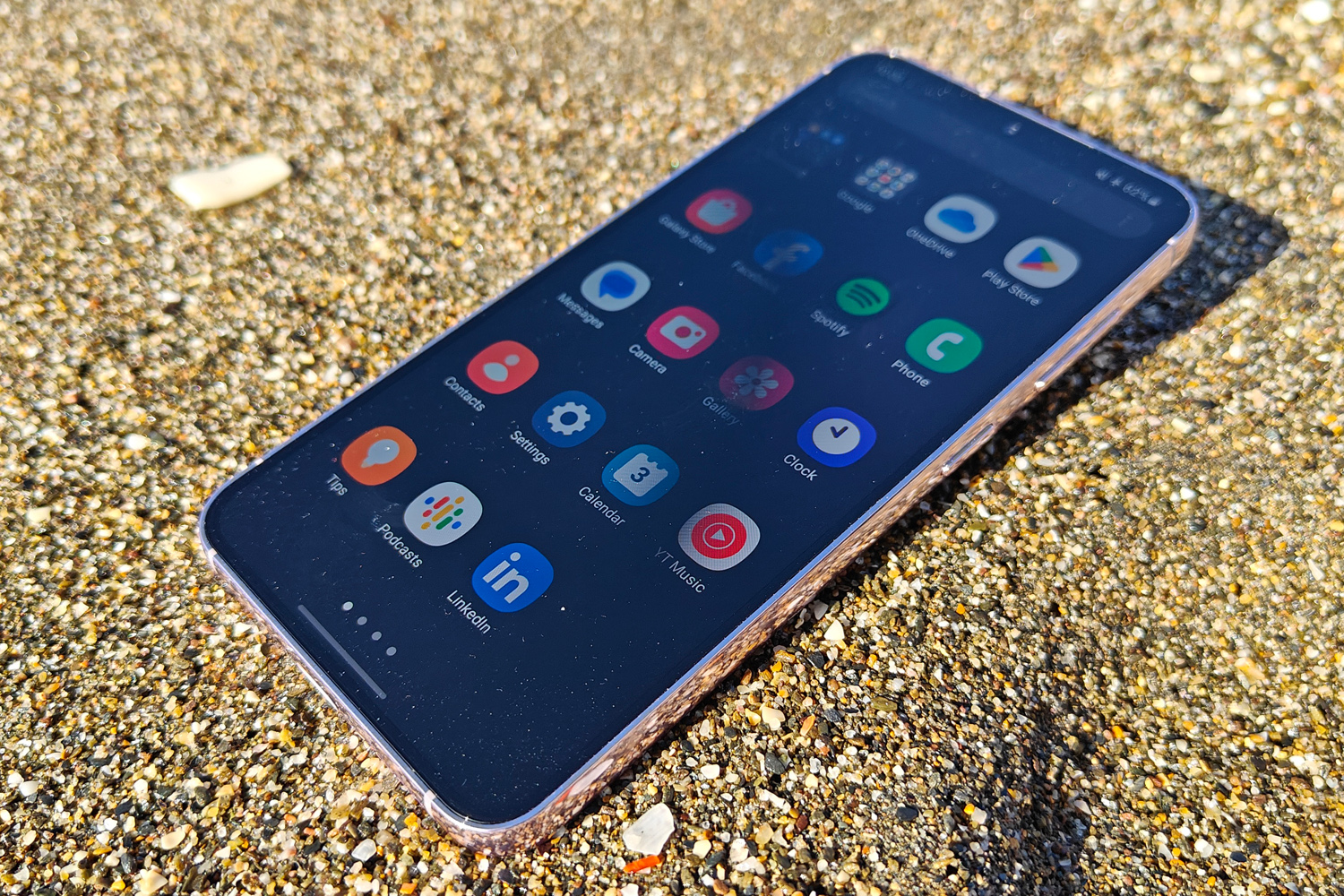
The 6.1in Galaxy S23 feels positively diddy compared to the current crop of big-screen Android rivals. Should you go for the costlier Galaxy S23+ instead? We’re not convinced the bigger brother does enough to justify its £200 higher price.
OK, you get a beefier battery and faster charging, but otherwise it’s just an upscaled S23, with the same cameras, performance and display resolution. When spending that kind of scratch, the S23 Ultra and its superior set of cameras aren’t such a huge leap. For everyone else, it makes sense to stick with the more compact model. It’s effortlessly quick, takes wonderful photos and looks every bit the flagship phone – and now it has the battery life to match.
The Galaxy S23 is also a safe bet, which puts user experience and an expansive software ecosystem ahead of hardware innovation or uber-competitive pricing. It doesn’t scream value for money as a result. More affordable rivals have taken the lead on charging speeds, and aren’t far behind when it comes to photography. With prices rising across the board, that might make the S23 a hard sell at launch – but discounted network contract deals are almost certain to sweeten the deal.
Stuff Says…
Samsung plays it safe, but the S23 is still a brilliantly well-rounded phone. It’s the compact Android flagship to beat, if you don’t mind paying a premium.
Good Stuff
Premium styling with beautiful build quality
Epic performance and great battery life
Some of the best mainstream smartphone cameras
Bad Stuff
Price bump from last year despite few major changes
No big leap in camera capability
Design has barely changed
Samsung Galaxy S23 technical specifications
| Screen | 6.1in, 2340×1080, 120Hz AMOLED |
| CPU | Qualcomm Snapdragon 8 Gen 2 |
| Memory | 8GB RAM |
| Cameras | 50MP + 12MP + 10MP rear, 12MP front |
| Storage | 128/256GB on-board |
| Operating system | Android 13 w/ OneUI 5.1 |
| Battery | 3900mAh w/ 25W wired charging, wireless charging |
| Dimensions | 146x71x7.6mm, 168g |

